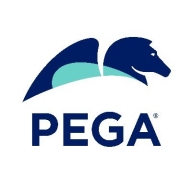

Red Hat Polymita Business Suite and Pega Platform compete in the business process management space. Data suggests Pega Platform has an advantage with its advanced feature set, despite Red Hat Polymita’s appealing pricing and support for budget-focused buyers.
Features: Red Hat Polymita Business Suite includes robust integration capabilities, extensive process automation, and flexibility, appealing to organizations requiring diverse options. Pega Platform provides AI-powered decision-making tools, dynamic case management, and advanced analytics, making it suitable for complex environments.
Ease of Deployment and Customer Service: Red Hat Polymita Business Suite offers straightforward deployment with strong customer support, aiding in technical challenges. Pega Platform features a cloud-based deployment model which allows rapid implementation but demands a deeper technical understanding. Its customer support provides substantial resources for assistance.
Pricing and ROI: Red Hat Polymita Business Suite is more budget-friendly with lower setup costs and competitive ROI, appealing to those needing cost-effective solutions. Pega Platform, while potentially higher in upfront expenses, shows impressive long-term ROI by enhancing efficiency through its features.
| Product | Market Share (%) |
|---|---|
| Pega Platform | 5.0% |
| Red Hat Polymita Business Suite | 0.3% |
| Other | 94.7% |

| Company Size | Count |
|---|---|
| Small Business | 9 |
| Midsize Enterprise | 15 |
| Large Enterprise | 68 |
Pega Platform provides flexible business process management with a focus on rapid application development and automation through a low-code approach, enhancing efficiency across sectors.
Pega Platform is renowned for its ability to streamline operations with robust automation features, including robotic process automation and decision-making capabilities. Its intuitive interface and workflow management contribute to a reputation for enhancing business processes. Although users face challenges with integration limitations and high licensing costs, they benefit from rapid deployment and efficient process adaptations. The unified architecture reduces complexity, while case management and integration services support digital transformations in sectors such as banking, insurance, and healthcare.
What are the key features of Pega Platform?In industries like insurance, banking, healthcare, and government, Pega Platform is implemented to automate diverse workflows, supporting initiatives from claims processing to customer onboarding. Enterprises use Pega for case management and digital transformations, valuing its out-of-the-box integrations and real-time reporting capabilities to boost operational automation and enhance customer experiences.
We monitor all Business Process Management (BPM) reviews to prevent fraudulent reviews and keep review quality high. We do not post reviews by company employees or direct competitors. We validate each review for authenticity via cross-reference with LinkedIn, and personal follow-up with the reviewer when necessary.